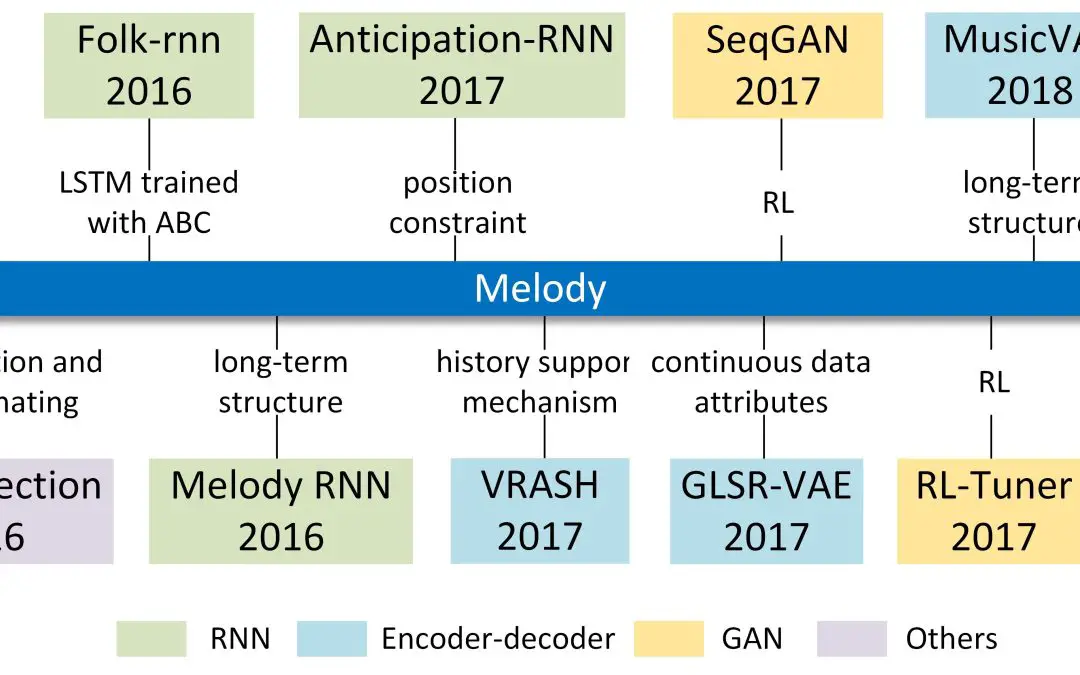Have you ever felt like you’re trying to crack a secret code when trying to understand chord progressions? Well, fear not, beginner musicians – we’re here to help decode the mysterious world of chord progressions for you! Grab your musical magnifying glass and get ready to embark on a harmonious journey full of surprises and revelations. Get ready to unlock the secrets behind the music you love in our beginner’s guide to decoding chord progressions. Let’s dive in and uncover the hidden gems of musical theory together!
Contents
- 1
- 2 Exploring Common Chord Progressions in Music
- 3 The Role of the Circle of Fifths in Chord Progressions
- 4 Applying Chord Progressions to Songwriting
- 5 Techniques for Modulating Between Different Key Signatures
- 6 Mastering the Art of Improvisation with Chord Progressions
- 7 Deep Dive into Advanced Chord Progression Concepts
- 8 FAQs
- 9 Rock On!
understanding-the-basic-structure-of-chord-progressions”>Understanding the Basic Structure of Chord Progressions
Have you ever wondered how musicians come up with those catchy chord progressions that get stuck in your head for days? Well, fear not, because I’m here to break it down for you in the most entertaining way possible.
First off, let’s talk about the foundation of chord progressions: the **tonic chord**. This is like your musical home base, the chord that everything else revolves around. It’s stable, it’s comforting, and it’s where you always end up no matter how far you stray.
Next up, we have the **subdominant chord**. This bad boy adds a bit of tension and excitement to the mix. It’s like that friend who always suggests doing something wild and crazy on a Friday night – you never quite know where it’s going to lead, but you’re always down for the ride.
And last but not least, we have the **dominant chord**. This is the chord that demands attention, that commands respect. It’s like the bossy older sibling who always gets their way, whether you like it or not. But hey, sometimes you just have to go along with it for the sake of harmony (pun totally intended).
So there you have it, folks – the basic structure of chord progressions in all its quirky, melodious glory. Now go forth and impress your friends with your newfound knowledge of the musical world. Who knows, you might just be the next Mozart in the making!
Exploring Common Chord Progressions in Music
Have you ever found yourself bopping your head to a catchy tune, only to realize that it’s the same four chords over and over again? Well, my friend, you have stumbled upon one of the wonders of music – common chord progressions.
These progressions are like the building blocks of all the songs you love and hate. They are tried and true, foolproof formulas that artists have been using for centuries to create the perfect earworm. So, let’s dive into the world of chord progressions and uncover some of the most popular ones that you’re bound to hear in almost every song.
First up, we have the I-IV-V progression. This bad boy is the bread and butter of music theory. It’s simple, classic, and oh-so-satisfying to the ears. You can find this progression in anything from rock to pop to country. Just think of all the hits that have been built on this foundation. Thank you, I-IV-V.
Next, we have the vi-IV-I-V progression. This one is like the cool cousin of the I-IV-V. It’s a little more interesting, a little more complex, and a lot more fun to play around with. This progression can take a song from generic to unforgettable in just a few chords. It’s a true game-changer in the world of music.

The Role of the Circle of Fifths in Chord Progressions
Ever wondered how musicians effortlessly transition between chords in a song, creating harmonious tunes that make us want to dance or cry? Well, look no further than the magical tool known as the Circle of Fifths! This mystical chart not only helps you remember your sharps and flats, but it also holds the key to unlocking the secret of captivating chord progressions.
Picture this: you’re jamming with your bandmates, and suddenly someone suggests switching from a C major to an F major chord. Instead of scratching your head in confusion, you consult the Circle of Fifths like a wise old wizard and voila! You discover that F is a perfect fourth away from C, making the transition seamless and oh-so-satisfying. Who knew music theory could be so much fun?
But wait, there’s more! The Circle of Fifths doesn’t just help you move between chords in a linear fashion; it also guides you towards creating complex and interesting progressions. By following the circle clockwise or counterclockwise, you can experiment with different chord combinations and add a dash of spice to your musical compositions.
So next time you find yourself stuck in a musical rut, just remember the trusty Circle of Fifths is here to save the day! With its enchanting powers, you’ll be crafting catchy chord progressions that will have audiences begging for an encore. Who knew a simple circle could hold such musical magic?

Applying Chord Progressions to Songwriting
So you’ve strummed your way through countless chord progressions, but now it’s time to take your songwriting to the next level. is like adding sprinkles to ice cream – it just makes everything better. Here are some tips to help you spice up your tunes:
- Experiment with different chord progressions – don’t be afraid to step out of your comfort zone and try something new. Who knows, you might stumble upon the perfect progression that will make your song stand out!
- Use unexpected chord changes to keep your listeners on their toes. A sudden switch from a major to a minor chord can create a moment of tension that will grab your audience’s attention.
- Consider the emotional impact of each chord progression. Minor chords often evoke feelings of sadness or melancholy, while major chords can give your song a more uplifting vibe. Mix and match to find the right balance for your song.
Remember, songwriting is all about being creative and having fun. So don’t be afraid to play around with different chord progressions until you find the one that speaks to you. Who knows, you might just write the next chart-topping hit!

Techniques for Modulating Between Different Key Signatures
So you want to impress your friends with your key signature modulating skills? Look no further, because I’ve got some killer techniques that will have everyone’s jaws on the floor!
First up, we have the classic pivot chord modulations. This is where you find a chord that exists in both keys and use it as a bridge to smoothly transition between them. It’s like a musical secret passage that no one sees coming!
Next, we have the common-tone modulation. This little trick involves holding onto a note that is shared between the two key signatures, using it as a safety net to guide you from one key to the next. It’s like a musical tightrope walk, but way less scary!
And finally, we have the chromatic modulation. This is where you throw in some unexpected sharps or flats to lead your listeners on a wild key signature rollercoaster. It’s like a musical plot twist that keeps everyone on the edge of their seats!
Mastering the Art of Improvisation with Chord Progressions
So, you want to take your improvisation skills to the next level, huh? Well, buckle up because we’re about to dive deep into the wild world of chord progressions!
First things first, let’s talk about the importance of knowing your chords inside and out. You wouldn’t try to build a house without a strong foundation, would you? Well, the same goes for improvisation. You need to have a solid understanding of the chords you’re working with in order to truly master the art.
Next, get ready to embrace the unexpected. Improvisation is all about thinking on your feet and taking risks. Don’t be afraid to stray from the traditional paths – that’s where the magic happens! Experiment with different voicings, add in some spicy extensions, and don’t be afraid to break the rules.
And finally, remember that practice makes perfect. The more you work on your improvisation skills, the better you’ll become. So, grab your instrument, turn on a backing track, and let those fingers fly! Who knows – you might just surprise yourself with what you come up with.
Deep Dive into Advanced Chord Progression Concepts
Are you ready to elevate your music theory game to the next level? Let’s take a deep dive into some advanced chord progression concepts that will have your listeners begging for more!
First up, let’s talk about chord substitutions. Tired of the same old major and minor chords? Mix things up by substituting in some spicy diminished or augmented chords. Your music will instantly sound more complex and intriguing.
- Try substituting a Bdim chord for a G7 chord
- Swap out a Cmaj7 for a Cmin7b5 for some added sophistication
Next, let’s explore modal interchange. This fancy term just means borrowing chords from parallel keys to add color and depth to your progressions. Play around with switching between different modes like Mixolydian, Dorian, and Lydian to create some truly unique sounds.
And lastly, don’t forget about secondary dominants. These bad boys add tension and drama to your chord progressions by temporarily deviating from your key. Spice things up by throwing in a V7 chord of a chord other than the tonic, and watch your listeners’ jaws drop in amazement.
FAQs
Why do chord progressions matter in music?
Oh, they don’t matter at all. In fact, you could just randomly strum your guitar and hope for the best. Just kidding! Chord progressions provide the structure and backbone of a song. They help create emotion, tension, and release in music.
How can I decode chord progressions as a beginner?
Well, first you’ll need your trusty decoder ring… Just kidding! The best way to start decoding chord progressions is to familiarize yourself with common chord patterns like the I-IV-V or the ii-V-I. Practice playing these progressions on your instrument so you can start recognizing them in songs.
What are some common chord progressions to look out for?
Some classic chord progressions to watch for include the 12-bar blues, the circle of fifths, and the pop anthem progression (vi-IV-I-V). These progressions show up time and time again in music, so they’re great ones to start with as a beginner.
How can I use chord progressions in my own songwriting?
Think of chord progressions as the building blocks of your song. Experiment with different progressions to evoke different moods and emotions in your music. And don’t be afraid to break the rules and try something unique – that’s where the magic happens!
What are some resources for learning more about chord progressions?
There are tons of great resources out there for beginners looking to dive deeper into chord progressions. Websites like Ultimate Guitar and music theory books like “Chord Progressions for Dummies” can be super helpful. And don’t forget to practice, practice, practice!
Rock On!
Congratulations, you’ve now unlocked the secret to decoding chord progressions like a pro! Armed with this knowledge, you’ll be strumming and jamming to your favorite tunes in no time. Remember, practice makes perfect, so keep rocking out and exploring the endless possibilities of chord progressions. Who knows, you might just be the next guitar hero in the making! Keep strumming and rocking on!



